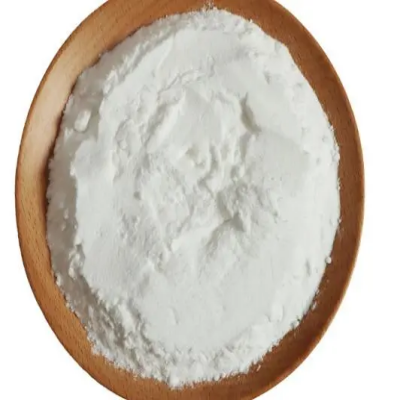-
![N-[2-[4-[N-(Hexyloxycarbonyl)amidino]phenylaminomethyl]-1-methyl-1H-benzimidazol-5-ylcarbonyl]-N-(2-pyridyl)-beta-alanine ethyl ester CAS:211915-06-9](https://cdn.globalso.com/xindaobiotech/3XBLOU_U4EX8J_HKYK9VL818.png)
N-[2-[4-[N-(Hexyloxycarbonyl)amidino]phenylaminomethyl]-1-methyl-1H-benzimidazol-5-ylcarbonyl]-N-(2-pyridyl)-beta-alanine ethyl ester CAS:211915-06-9
N-[2-[4-[N-(Hexyloxycarbonyl)amidino]phenylaminomethyl]-1-methyl-1H-benzimidazol-5-ylcarbonyl]-N-(2-pyridyl)-beta-alanine ethyl ester is a compound with intricate molecular structure, showing promise for various potential therapeutic uses.
-

Thiophene-2-ethylamine CAS:30433-91-1
Thiophene-2-ethylamine is a compound that combines a thiophene ring with an ethylamine group, offering a platform for diverse applications in pharmaceuticals, materials science, and organic synthesis. Its distinctive chemical structure makes it a valuable building block for creating novel compounds with tailored properties and functionalities.
-

Clopidogrel camphorsulfonate CAS:120202-68-8
Clopidogrel camphorsulfonate is a salt form of the antiplatelet drug Clopidogrel, commonly used to prevent blood clots in patients with cardiovascular diseases. This compound exhibits potent antiplatelet activity by inhibiting platelet aggregation, thus reducing the risk of clot formation and related complications.
-
![4,5,6,7-Tetrahydrothieno[3,2,c]pyridine hydrochloride CAS:28783-41-7](https://cdn.globalso.com/xindaobiotech/GRKLPVJ3QSJRM109.png)
4,5,6,7-Tetrahydrothieno[3,2,c]pyridine hydrochloride CAS:28783-41-7
4,5,6,7-Tetrahydrothieno[3,2,c]pyridine hydrochloride is a heterocyclic molecule with a thieno-pyridine core structure that confers unique chemical properties. This compound is commonly used in organic synthesis, drug discovery, and materials science due to its versatile reactivity and potential biological activities.
-

3,4-Dihydro-7-hydroxy-2(1H)-quinolinone CAS:22246-18-0
3,4-Dihydro-7-hydroxy-2(1H)-quinolinone is a chemical compound with the molecular formula C9H9NO2. It belongs to the class of quinolinone derivatives and is known for its pharmacological properties. This compound is characterized by a quinolinone ring system with hydroxy and dihydroxy groups, making it valuable in medicinal chemistry research. Its unique structure and reactivity make it a versatile intermediate for the synthesis of various pharmaceutical compounds. 3,4-Dihydro-7-hydroxy-2(1H)-quinolinone is a pale yellow to brown crystalline powder that is sparingly soluble in water but soluble in organic solvents.
-

3-Aminopyrazine-2-carboxylic acid CAS:5424-01-1
3-Aminopyrazine-2-carboxylic acid is a chemical compound with the molecular formula C5H5N3O2. It is a white crystalline powder that is commonly used in the pharmaceutical industry for various applications. This compound is known for its versatile properties and is widely utilized in research and development processes.
-
![5,6-Dihydro-3-(4-morpholinyl)-1-[4-(2-oxo-1-piperidinyl)phenyl]-2(1H)-pyridinone CAS:545445-44-1](https://cdn.globalso.com/xindaobiotech/14Z4YR3PJ6@V5_YM281.png)
5,6-Dihydro-3-(4-morpholinyl)-1-[4-(2-oxo-1-piperidinyl)phenyl]-2(1H)-pyridinone CAS:545445-44-1
5,6-Dihydro-3-(4-morpholinyl)-1-[4-(2-oxo-1-piperidinyl)phenyl]-2(1H)-pyridinone is a heterocyclic compound with a morpholine ring, a piperidine ring, and a pyridinone core structure. This complex molecule exhibits promising pharmaceutical properties and is utilized in drug discovery and medicinal chemistry.
-

4-Fluorobenzonitrile CAS:1194-02-1
4-Fluorobenzonitrile, with the chemical formula C7H4FN, is a versatile aromatic compound used in organic synthesis and research. It consists of a benzene ring with a cyano group (-CN) and a fluorine atom attached to the 4th carbon position. This colorless to pale yellow liquid compound has a wide range of applications in the pharmaceutical, agrochemical, and material science industries. Its reactivity and unique chemical properties make it an essential building block for creating various functionalized aromatic compounds and derivatives.
-
![ethyl N-[3-amino-4-(methylamino)benzoyl]-N-pyridin-2-yl-beta-alaninate CAS:212322-56-0](https://cdn.globalso.com/xindaobiotech/8NS8DBIRAVXN0VCLT212.png)
ethyl N-[3-amino-4-(methylamino)benzoyl]-N-pyridin-2-yl-beta-alaninate CAS:212322-56-0
ethyl N-[3-amino-4-(methylamino)benzoyl]-N-pyridin-2-yl-beta-alaninate is a chemical entity with a unique molecular structure that suggests potential therapeutic value in various medicinal contexts. Its structural composition presents opportunities for targeted biological interactions and pharmaceutical development.
-

N-(4-cyanophenyl)-Glycine CAS:212322-56-0
N-(4-cyanophenyl)-Glycine is a compound with a unique chemical structure that holds promise for various medicinal purposes. Its molecular composition suggests possible interactions with biological systems, presenting opportunities for pharmaceutical development.
-

4-Bromo-1,2-pyrazolidinedicarboxaldehyde CAS:162887-23-2
4-Bromo-1,2-pyrazolidinedicarboxaldehyde is a valuable building block in organic synthesis, featuring a bromine-substituted pyrazolidine ring with aldehyde functional groups. This compound is utilized in the pharmaceutical, agrochemical, and material science industries for its reactivity and versatility. Its distinct structure and chemical reactivity make it an essential component in the creation of various functionalized organic compounds and derivatives.
-
![S-(+)-Methyl-(2-chlorophenyl)[(2-(2-thienyl)amino] acetate hydrochloride CAS:141109-19-5](https://cdn.globalso.com/xindaobiotech/K@NIE7HBAEP6E7J7DS223.png)
S-(+)-Methyl-(2-chlorophenyl)[(2-(2-thienyl)amino] acetate hydrochloride CAS:141109-19-5
S-(+)-Methyl-(2-chlorophenyl)[(2-(2-thienyl)amino] acetate hydrochloride is a compound with diverse pharmacological properties that make it a valuable candidate for drug development. Its structural features offer opportunities for manipulating biological activity and understanding molecular interactions in various medical contexts.

